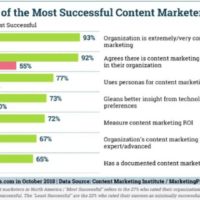
Written by Anthony Levato – VP of Marketing at ButterFlyMX
As a marketer, you have a seemingly endless number of channels to reach your prospects, but have you ever wondered what happens if your marketing is seen by the wrong people?
From local newspapers to Facebook’s global network of two billion users, your campaigns can be seen by nearly every person in the world. Need to target flannel-wearing lumberjacks in Washington? Done. How about cat-loving motorcyclists in Texas? Easy. But with so many eyeballs on your marketing, it’s bound to draw the attention of some bad people; people trying to defraud your company. If you’re like most marketers, the thought of fraud has never even crossed your mind. And why should it? Your goals are aligned with increasing revenue, promoting customer delight, and improving your brand’s image. Fraud couldn’t possibly impact these metrics, right?
Unfortunately, the effects of ecommerce fraud can creep into every department, including marketing. Your revenue goals will suffer due to chargebacks and associated fees. Your customers’ satisfaction will drop as they’re forced to endure longer review times. Even your brand’s image could deteriorate from a public’s perception that your site facilitates fraudulent activity. When viewed in this light, perhaps it’s easier to see why you should pay closer attention to the fight against ecommerce fraud. So how can you continue to reach, and even exceed, your marketing goals while also helping to prevent fraud? Your email marketing software may hold the answer.
The email address
If you’re running an email campaign, then you already have one of the most valuable data points in the fight against fraud: an email address.
In the 46 years since the first email was sent, email marketing has evolved from a simple method of communication to a sophisticated system for connecting, engaging, selling, and, yes, protecting your business from fraud. In fact, when fraud rates are compared to other marketing channels such as ads on Facebook or Instagram, customers who come via your email marketing are four times less likely to be fraudsters, according to data from Riskified, a leading eCommerce fraud prevention company. You can thank the old, reliable email address for this.
For years, fraud-prevention professionals have been using email addresses as a form of identity verification. They know that certain characteristics of an email address are typically associated with higher risk customers. For example, the age of an email address can be helpful in understanding whether your customer is a known and trusted member of the internet community or a swindler. Tools such as emailage exist to help you quickly recognize an old friend from a new enemy. And while the age of an email is important, so too is the provider, as some are safer than others.
Gmail, for example, requires each user to verify their identity, which makes it a less likely choice for an individual committing a crime. Also, the naming convention of the email can be a strong indicator. If you notice an address that looks odd or resembles a keyboard smash like asdf123@gmail.com, proceed with caution, as this can be a sign of a charlatan waiting to strike. When taken together, the email age, provider, and name can help you separate a customer from a thief.
Promotions
Customers love promotions, fraudsters don’t.
You’ve learned about the four Ps of marketing: price, product, promotion, and place. The four Ps are what drive customers to consider your product and, ultimately, purchase. But one of those Ps – promotion – can also help you avoid fraud.
We often think about promotions as a way to advertise a product or brand, quickly sell inventory, and create loyalty among new and existing customers. Promotions also happen to be extremely effective at verifying legitimate, loyal customers. As a matter of fact, ecommerce transactions that don’t include a promotional code are three times as likely to be fraudulent as transactions that do include a code, according to Riskified. Why? Because when a fraudster is using someone else’s credit card, he doesn’t care about entering a promotional code to save money.
So when you’re designing your next email campaign to promote the launch of a new product, consider creating a unique promotional code to accompany it. Not only will your customers thank you, but so will your fraud prevention team.
Behavioral tracking
Keep your friends close and your enemies closer.
In marketing, the more you know about your customer and their behaviors, the better. Well, the same is true in fraud prevention. Thankfully, many email marketing platforms automatically capture and store behavioral data about your customers through the use of cookies. One important piece of data your marketing system captures is the pages your customer has viewed and the order in which they have viewed them.
Pageviews, and, more importantly, the order of the views, can be vital in differentiating a customer from a crook. Just like your legitimate patrons have buying journeys, so do your fraudsters. While a faithful shopper will typically compare prices and read reviews resulting in a lengthy pageview history, fraudsters will not waste their time learning about your products. Instead, they will quickly go to your site’s product page and purchase the highest value item. So next time your fraud team is scrutinizing an order, share that customer’s pageview history with them. It could determine whether a loyal customer gets their goods or a fraudster’s attempt at a quick take is thwarted.
Bringing it together
By leveraging what’s already available in your email marketing software you can fight ecommerce fraud while improving your performance metrics.
Reviewing your database’s email addresses, including promotional codes in your email campaigns, and tracking the behavior of your customers are all effective ways of using your emailing platform to increase revenue while also fighting fraud. And, sure, it’s easy for us marketers to turn a blind eye to fraud, as on the surface our goals are rarely aligned with preventing it. But when you realize the impact fraudsters can have on your marketing efforts, it can quickly change your view. So before you get started creating that new marketing campaign, consider implementing some of the suggestions above. Hitting your marketing goals could depend on it.
This post was written by one of dotmailer’s partners, Riskified, a technology company focused on leveraging data and innovation to ensure brands are always one step ahead of online fraudsters.
About Guest Contributor: Anthony Levato is the head of marketing at ButterflyMX, a property technology company. He enjoys taking classes online, reading and writing about marketing, and riding his bicycle in New York City. You may contact him directly at anthony.levato@butterflymx.com




